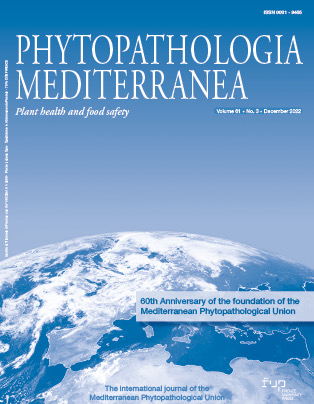Published 2022-11-25
Keywords
- qPCR,
- Nerium oleander,
- TaqMan,
- EvaGreen,
- dPCR
How to Cite
Copyright (c) 2022 Alessandro PASSERA, Valentina GROSSO, Niccolò MIOTTI, Marzia ROSSATO, Francesca GAFFURI, Paola CASATI, Massimo DELLEDONNE, Piero BIANCO

This work is licensed under a Creative Commons Attribution 4.0 International License.
Funding data
-
Regione Lombardia
Grant numbers M1.2018.0067306
Abstract
Xylella fastidiosa is a fastidious Gram-negative bacterium that is associated with several important plant diseases, and is regulated as a quarantine pest in many countries where strategies are implemented to prevent its introduction and spread. To enact efficient quarantine measures, effective and early detection of the pathogen are essential, especially because global trade of goods increases the risks of introduction of alien pathogens. this study aimed to adapt two qPCR-based diagnostic methods (SYBR Green and Probe based qPCR), already in use to detect X. fastidiosa, for use with a nanoplate based digital PCR assay. Detection of the pathogen using the two digital PCR assays (EvaGreen- and Probe-based) was similar to standard qPCR, giving 100% sensitivity, specificity, and accuracy, while providing accurate absolute quantification of the pathogen when using experimental samples that had low concentrations of host DNA. Using undiluted plant DNA added with low concentrations of X. fastidiosa, only the TaqMan method maintained satisfactory performance and quantification, and is therefore preferred. These results are a first step demonstrating the usefulness of nanoplate-based digital PCR for detection of plant pathogens, which allows greater throughput than qPCR, reducing the time and cost of diagnostic assays.






